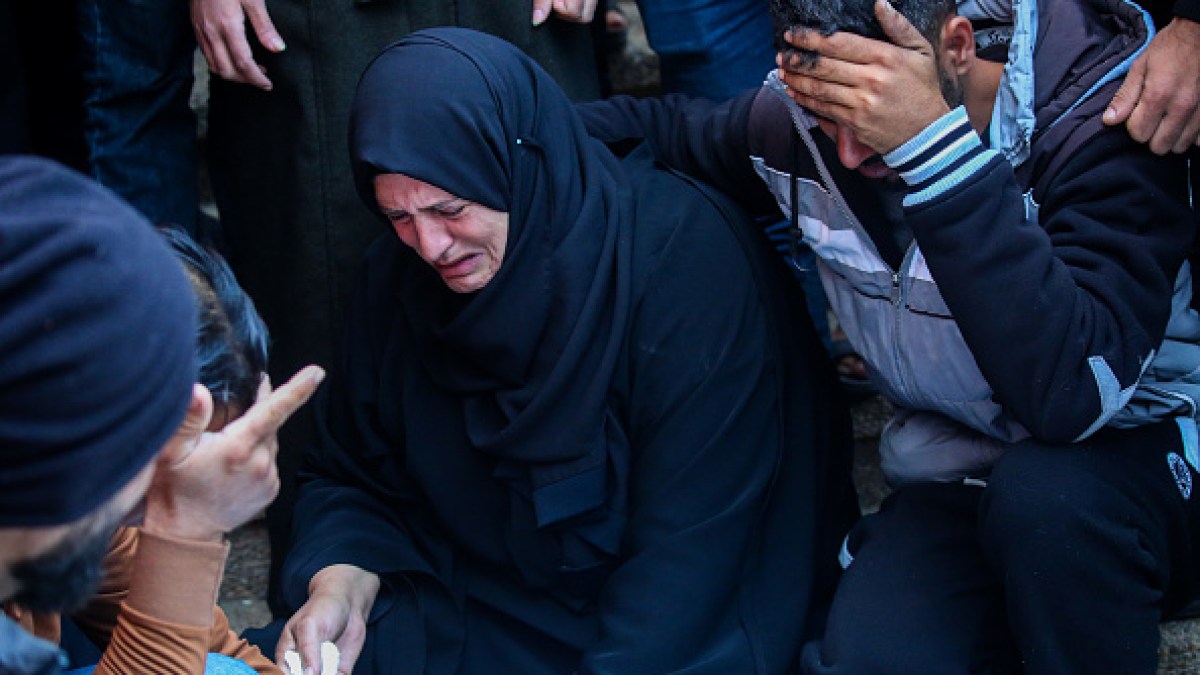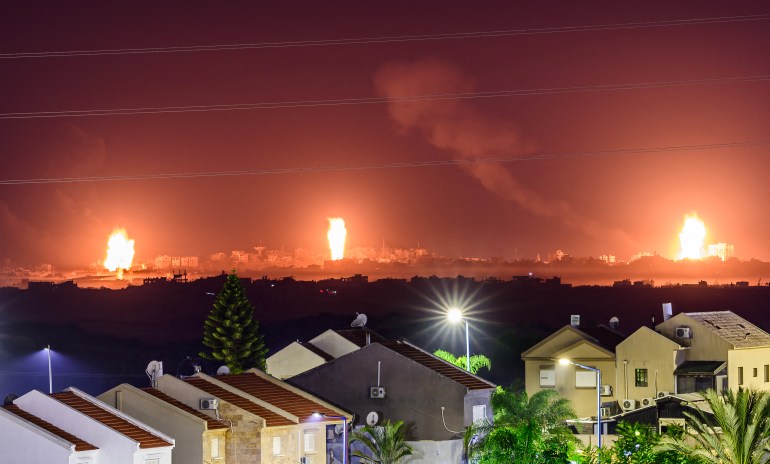
Analysis: Israel resumed bombing Gaza, what has happened since? | Israel-Palestine conflict News
- Politics
- December 3, 2023
- No Comment
- 436
Fighting in Gaza resumed almost on cue on Friday when the last extension of the truce expired and hopes in attempts to renew it again faded.
Back in action first were Israeli F-16 bombers, pounding more than 400 targets in Gaza, including some in the very south near the Rafah border crossing with Egypt. However, the focus appeared to be in the north and there is little doubt that the Israeli army will try to advance deeper towards the centre of Gaza City just as Defence Minister Yoav Gallant announced: tanks, artillery, armoured bulldozers, then infantry.
Meanwhile, contradictory news from Qatar, where intermediaries from the host country, Egypt and the United States were still trying to convince the warring sides to reach another pause. The first announcement on Saturday said the talks were continuing.
Then at mid-afternoon, the Israeli prime minister’s office issued a statement: “Following the impasse … David Barnea, head of the Mossad, ordered his team in Doha to return to Israel.”
Writing official statements is an art: One should never lie but there is no need to tell the whole truth. While the “official” Israeli secret service delegation may indeed be on its way home, I have no doubt that at least a small team remains in Doha. They may not be Mossad, but it would be foolish not to leave qualified liaison officers who can keep talking.
Another reason for Israeli Prime Minister Benjamin Netanyahu to maintain at least a core team of officials in Qatar would be to avoid straining relations with traditional ally the United States, which has supported Israel greatly in the post-October 7 crisis.
US President Joe Biden visited Israel offering Bibi a photo op the cunning veteran of Israeli politics jumped on, splattering the media with their embraces and carefully selected soundbites. Washington followed with massive supplies of military goods, some commercial sales, and others loans. The biggest may be the $14.3bn aid package “for Israel’s defence”.
Weapons and armaments have been pouring into Israel by US C-17 aircraft and commercial airlifters practically from October 8. The Washington Post reported that 15,000 bombs and 57,000 artillery shells (155mm) came by air, a figure consistent with the estimated amount of ordnance expended in the eight-week campaign and the carrying capacity of the aircraft.
Less urgent supplies will be arriving on less glamourous, higher-capacity ships.
As the bombing campaign resumed, the media revealed the types of bombs shipped to Israel, focusing mostly on the specialised heavy “bunker busters”. The report claims that 100 BLU-109 bombs were shipped. Some media speculated that this delivery may signify a change in tactics against the Hamas, but there is nothing to be excited about.

The 900kg (2,000lb) BLU-109 is nothing more than a “dumb bomb” with thicker outer walls than general-purpose bombs, that help it penetrate deeper into the earth or through thicker layers of reinforcing concrete before exploding. The corresponding weight class general-purpose MK84 bomb carries 430kg (950lb) of explosives to the “bunker-busters” 240kg (530lb).
But the BLU-109, which costs US taxpayers $65,000 apiece versus $16,000 for the MK84, is of little use to Israel as a dumb bomb. To be effective and able to hit targets with precision, it needs to be upgraded with a far costlier laser guidance head unit and a control tail unit. According to the same reports, the US delivered 3,000 such JDAM kits that convert dumb bombs into smart weapons.
Apart from 100 bunker busters, US deliveries reportedly included two sizes of general-purpose dumb bombs: 5,400 MK84s – 900kg (2,000lb) – and 5,000 MK82s – 450kg (1,000lb) – and 1,000 precision-guided GBU-39 “small diameter bombs” – 150kg (300lb).
Worried about the indiscriminate aerial bombardment of Palestinian targets that could be compared to carpet bombing, the US warned Israel on several occasions to reduce the number of civilian casualties.
After the resumption of bombing on Friday, US Secretary of State Antony Blinken warned Israel that “the massive levels of loss of civilian life and displacement scale we saw in the north must not be repeated in the south”.

He allegedly received Israeli assurances that they would try to kill fewer civilians, but the casualty toll in the first 24 hours of renewed fighting, with nearly 200 reportedly killed in the bombardment, leaves little room for optimism.
Can anything about the intentions of the next stage of aerial bombardment be determined from the numbers and types of bombs delivered to the Israeli army?
First, there is no reason to put too much importance on the delivery of 100 bunker busters. Israel already had those in its arsenal and used some, so this may be a simple replenishment or a modest build-up. While long and sometimes deep, Hamas tunnels are mostly not covered in thick layers of concrete, so Israel would need just a handful of bunker busters.
Second, one could compare the number of conventional bombs delivered, 10,400 of two different weight classes, with the number of JDAM kits, 3,000. Along with the transfer of 1,000 small but precise “small-diameter bombs”, these figures may suggest that one in every three or four bombs dropped in future might be “smart” and that Israel would be making an effort to reduce civilian casualties in Gaza, as it allegedly promised the US.
Such a conclusion would be premature. Without knowing the number of dumb bombs and smart kits that were in Israeli warehouses and bases before October 7, a top military secret, the ratio of precision-guided bombs versus dumb ones that indiscriminately destroy civilian infrastructure and kill non-combatants, cannot be made and it will take several more days to establish whether there is any change in the way targets on the ground are attacked.
#Analysis #Israel #resumed #bombing #Gaza #happened #IsraelPalestine #conflict #News









